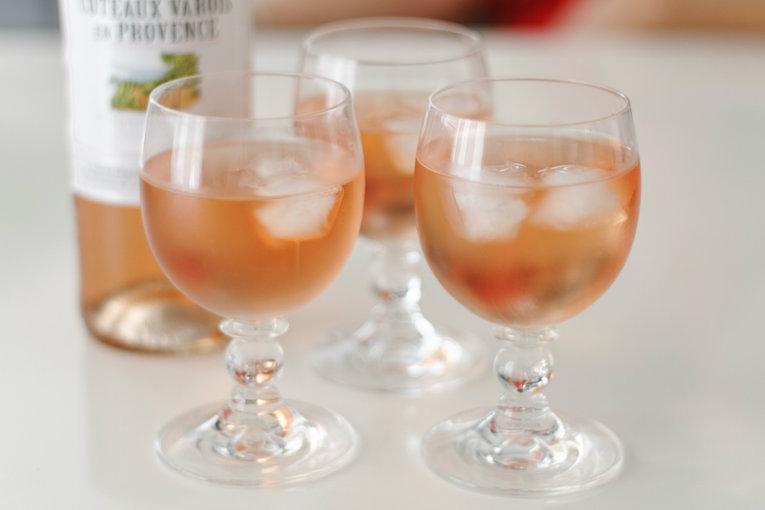How To Pair The Perfect Rosé With Your Personality

Pexels
We know rosé forties and rosé wine slushies are things, but how do we know which variety of rosé we like the most? When the skins of red grapes interact with wine for a shorter period of time, this is when rosé happens. Winemakers have complete control over how much exposure the wine has with the red grape skins, so the color can widely vary based on personal preference, from light pink to salmon to light red.
Rosé varies just as much as red wine does since it can be made with any red wine grapes, but there are certain styles that are more common than others. The main flavors that you’ll pick up are usually floral, citrus or fruit, although other not-so-sweet flavors can make an appearance. Color doesn’t just tell you the particular type of grape used to make the rosé, it also tells you what kind of qualities and flavors you can count on discovering.

Wikimedia
Tempranillo Rosé
This is a wine that’s a native Spanish variety with the same grape that’s used in Rioja wines. The color is a pale pink and it’s usually marked by strong red fruit flavors and herbaceous notes. Tempranillo is sometimes blended with other grapes and it’s considered to be a full to medium-bodied rosé. Pair it with Mexican foods, tomato-based sauces, grilled meats and smoky dishes.
Cabernet Sauvignon Rosé
Cabernet Sauvignon rosé is a ruby red color with savory red wine-like flavors like black currant, cherry and pepper. It’s usually made using the Saignée method, where a more concentrated wine is produced and rosé is the by-product. This is typically a pretty acidic wine with a zesty aroma and it goes best with fresh fish and vegetables.

Wikimedia
Zinfandel Rosé
Also known as White Zinfandel, this type of light pink rosé is on the sweeter end of the spectrum and it’s seen as kind of the gateway wine for people who want to hop on the train, but aren’t quite ready do tackle more complex bottles. People who cling to Zinfandel rosé, often do so because of its fruit-punch flavor and sweet finish, which can mask the sometimes-cheap grapes sometimes used in the process. It’s usually made in an off-dry style with flavors of cotton candy, strawberry and melon. Serve this sweet rosé chilled and pair it with pasta dishes, mild cheeses, lamb, Thai or Indian cuisine and desserts with fresh berries.
Grenache Rosé
Grenache is one of the most popular grapes used for rosé because of its thin skin and pale color. You’ll taste flavor notes like jammy strawberries, raspberries, allspice, plums, cherries and fresh herbs. Grenache is known for being a silky and full, mouth-coating rosé that is somewhat like a Pinot Noir. This type of rosé is made in France and Spain for the most part. Pair Grenache with roasted meats, stews, gouda and fontina cheese.

Pixabay
Tavel Rosé
Tavel is a dry, full-bodied rosé that’s considered to be rich and savory with a common mixture of Grenache and Syrah grapes and sometimes Cinsault. Tavel can range in color, but a lot of the time it has a deep salmon-pink color, low acidity and a decently high alcohol content. As Tavel rosé ages it can go from having summer fruity to notes to being rich and earthy. You could pair this with intensely cheesy dishes, chicken, seafood pasta or herb sausages.
Provence Rosé
This pale pink rosé goes with just about anything. It’s made in Provence, France, and its notes are often raspberry, strawberry, citrus and rosé petal. You can pair it with everything from burgers and meats to all kinds of Mediterranean food. Provence rosé is a dry-style, fresh and crisp and it’s a safe bet for any occasion.

Flickr/Chris Pople/CC BY
Pinot Noir Rosé
This a delicate rosé with notes of strawberry, watermelon and rose petals and it’s considered one of the more sophisticated rosé wines. It’s crisp and dry and goes well with fresh cheeses like goat cheese since it’s on the subtle side. You could also serve the Pinot Noir with scallops or fresh vegetables. Color-wise, it’s a shade darker than Provence rosé with a refreshing berry taste.
Syrah Rosé
On the more intense end of the rosé spectrum, Syrah is a savory wine made using the same Saignée method, which gives it a bold red color. You’ll taste some notes of cherry, green olive and peach. This kind of rosé doesn’t need to be chilled as much as the others and you could serve it at a dinner party with spaghetti bolognese, savory tarts, vegetables or a salad.











